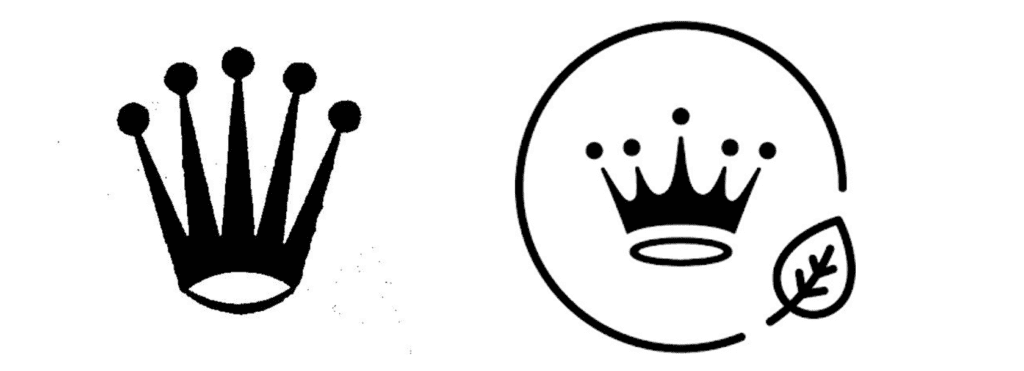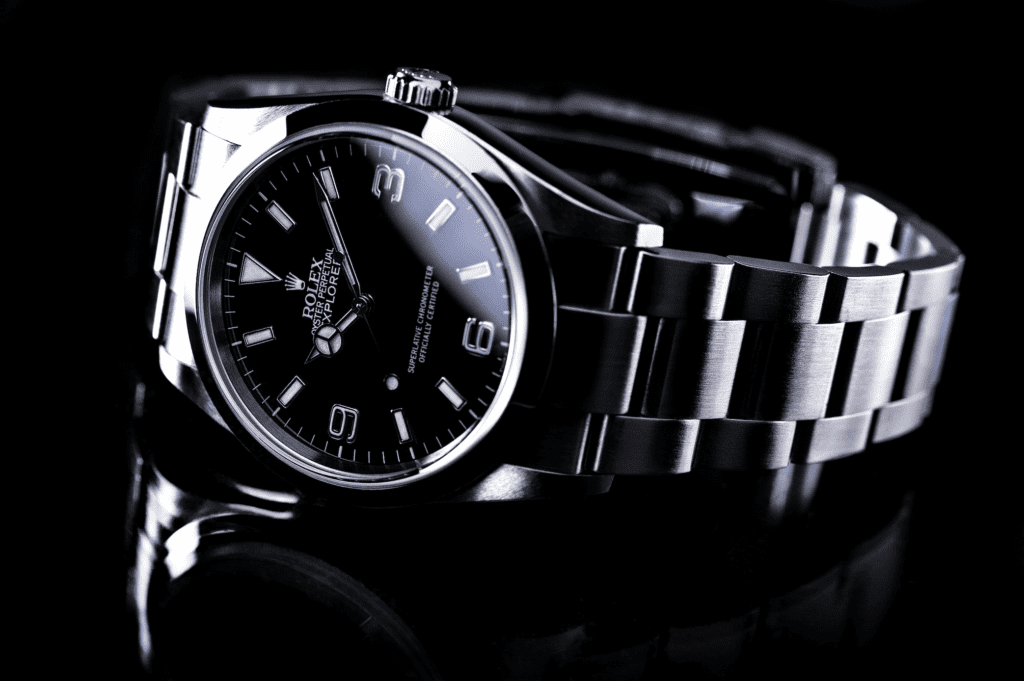In a clash over crown logos, Rolex is taking on Hallmark by way of a newly initiated trademark opposition proceeding. According to the notice of opposition that it lodged on April 23, Rolex is urging the U.S. Patent and Trademark Office (“USPTO”)’s Trademark Trial and Appeal Board to block part of the application for registration that Hallmark Licensing LLC (“Hallmark”) filed for a logo consisting of “an open crown design circumscribed by a circle that is interrupted by a leaf” for use on goods ranging from candles, clothing, and paper products to jewelry, drinkware, and boardgames. The Swiss watchmaker argues that it will be damaged if the USPTO agrees to register Hallmark’s logo in Class 14 (jewelry) due to the similarity of the mark to Rolex’s own crown logo.
A relatively straightforward opposition, as exclusively reported by TFL, Rolex claims that Kansas City, Missouri-headquartered Hallmark is “seeking to apply [a lookalike] crown mark on goods that are identical or in some way related to Rolex’s famous watches and/or Rolex’s promotional goods.” As a result, Rolex argues that if the greeting card company is granted a registration for its lookalike logo that extends to jewelry products, that would cause damage to the Rolex brand, as consumers are likely to be confused as to the source of such Hallmark products.

Setting the stage in the opposition, which provides something of a high-level blueprint for how to build a world-famous trademark, Rolex asserts that “for over 60 years,” it has used the “distinctive crown design logo” in connection with each Rolex watch it has distributed in the U.S., noting that it has sold “hundreds of millions of watches in the United States,” alone. At the same time, the American arm of the Swiss watchmaking titan claims that it has “consistently used the crown design trademark in its advertisements [and] promotional materials” for upwards of 60 years, and has spent “in excess of $100 million, over the past 60 years, advertising and promoting its crown design trademark” to consumers in the U.S. market.
Delving into its advertising activities, Rolex says that it uses the crown design trademark in “national publications, television and online media and through promotional events,” with the crown design trademark often serving as “the focal point” of these advertising campaigns. Beyond traditional advertising efforts, Rolex states that it has a long history of “sponsor[ing] and promot[ing] some of the largest sporting, entertainment, cultural and charitable events throughout the U.S.” – presumably as a way to get its brand name and various brand indicators, including the crown logo, in front of relevant consumers.
While Rolex does not mention specific sponsorship events here, it states on its website that it has maintained decades-long partnerships that coincide with “all the major events” in the men’s and women’s tennis circuit and leading international team contests,” for example, as well as partnerships with the organizers of famous golf, yachting, motor racing, and equestrian events.
Looking beyond sports, Rolex asserts in its notice of opposition that is also sponsors “events that promote and support a broad array of scientific disciplines and endeavors, an equally wide spectrum of the arts, and a whole host of non-profit organizations engaged in all manner of public works” – and the crown design trademark “has been and continues to be used and promoted throughout all of [these] events and sponsorships.” This has served to further broaden the pool of consumers that come in contact with the crown logo as an indicia of the Rolex brand and as a symbol of “high quality products” like its luxury watches.
> As we previously dove into here, companies are not only in the business of conditioning consumers to associate certain branding with a single source (hence, creating trademark rights) but are also readily using conditioning and reinforcement to develop consumer preference by getting them to associate certain qualities with a brand. For Rolex (and a growing number of other luxury brands), sporting and other cultural events are proving to be increasingly ripe ground for reaching luxury goods buyers.
In connection with such sponsorships (and in a nod to the fact that scope of its trademark rights in the crown logo has expanded beyond just watches), Rolex says that it has “consistently distributed and/or sold promotional goods” with the crown design trademark “appear[ing] on all of those goods and often appears alone on the following: clothing such as hats, vests, scarves and ties; key chains; small leather goods like wallets and travel kits; leather carry bags, cologne; sunglasses, pins, cufflinks and pens.”
Finally, from a retail perspective, Rolex states that since 2008, “the crown design trademark has also been used to identify retail stores [in the U.S.], featuring watches and jewelry, which are sponsored or authorized by Rolex to sell its genuine, high-quality products,” noting that the logo can be found on “all of Rolex’s point of sale displays and packaging that accompanies each new Rolex watch.”
With the foregoing in mind, and “as a result of its long, continuous use, its vast advertising and promotion of the crown design trademark in connection with not only watches but various sporting, entertainment and charitable events that Rolex sponsors, and all of the promotional goods distributed,” Rolex maintains that its crown logo “has become extremely well known … and similar items sold or marketed under a mark confusingly similar to its crown design trademark are, and will be, immediately and exclusively associated with Rolex.”
And speaking of the well known nature of the crown logo, Rolex argues that the mark has become so “widely recognized by the general consuming public of the U.S. as a designation associated with Rolex” that it can be considered “a famous mark” for dilution purposes, meaning that it has reached a level of fame that is traditionally reserved for marks that are the equivalent of a “household name.”
Updated
June 4, 2024
In a consent motion on June 4, the parties alerted the TTAB that they “agree, through their counsel, to resolve the dispute.” Accordingly, Rolex Watch U.S.A., Inc. will withdraw the Notice of Opposition with prejudice and Hallmark Licensing, LLC agrees to expressly withdraw and abandon its application to register the Crown and Leaf Design trademark as shown in Application No. 97855526 as to all of the goods in IC 014.














